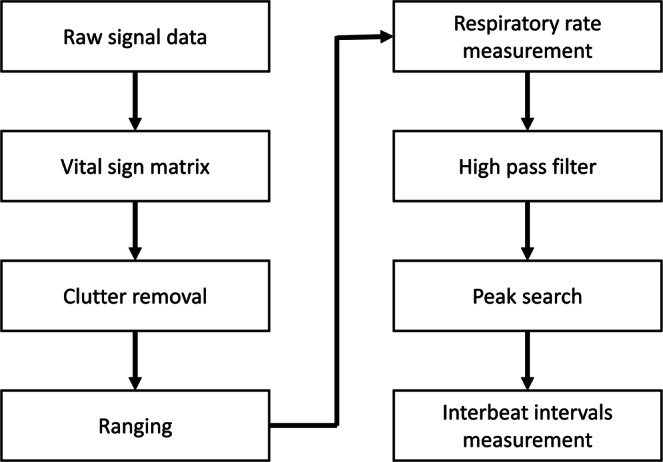Figure 2.

Data processing flow. The radar sensor accumulated the received raw signals and generated a vital sign matrix for the measured period. Background data, also called clutter, were subtracted from the raw signal so that the target with respiratory motion could be detected. After ranging the target, the vital signal was obtained from the radar signal, including the respiratory and carotid pulse signals. The respiratory rate was estimated from the fast Fourier transform of the vital signal, and only the carotid pulse signal remained after passing the signal through a high-pass filter. From the carotid pulse signal, the peaks were identified and interbeat intervals were measured from the peak intervals.
